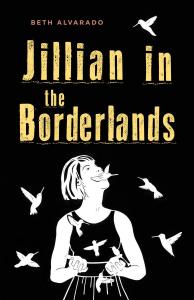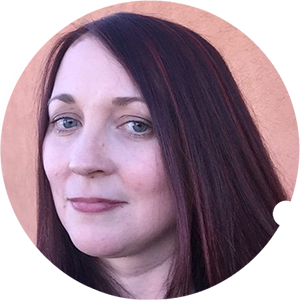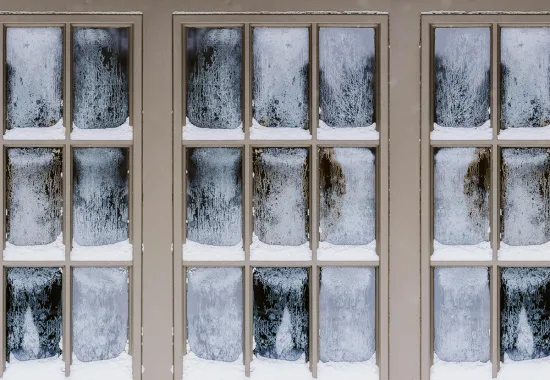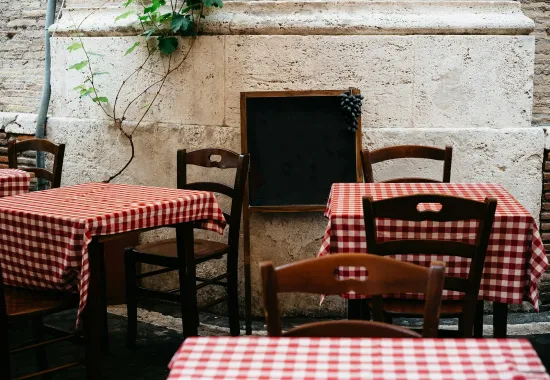A Cycle of Rather Dark Tales: A Review of "Jillian in the Borderlands" by Beth Alvarado
The nine-year-old girl at the heart of Beth Alvarado’s new story collection was born knowing “everything she needs to know.” Jillian in the Borderlands: A Cycle of Rather Dark Tales documents Jillian’s encounters with both the borderlands of the Sonoran desert and the borderlands of the living and the dead. Jillian, though equipped with omniscience and a rare knowledge of the past, does not speak. Her fiercely protective mother, Angie O’Malley, travels alongside her daughter as Jillian grows into an artist, mother, and activist. Mother and daughter are joined by a whole cast of characters including a healer and her channeling Chihuahua, a dying father making amends, an aunt with a traumatic brain injury, infant twin brothers who communicate in a language only they share, and a chorus of the “Demented Elderly” in a care home in northern Mexico.
 Jillian’s powers go beyond her omniscience. She can see ghosts and re-experience a place’s history. As a child, she does not envision the future; rather, she conjures the past as it plays out in front of her and leaves its indelible mark on the present. She witnesses her long-dead great-grandfather’s racism against Chinese immigrants in San Francisco as she walks the streets of her grandmother’s city. From her backyard, she uncovers the horrible truth about her sinister next-door neighbor’s missing child bride. She can interpret most languages, yet she cannot speak. Or perhaps, she chooses not to speak because she has found more powerful ways to communicate.
Jillian’s powers go beyond her omniscience. She can see ghosts and re-experience a place’s history. As a child, she does not envision the future; rather, she conjures the past as it plays out in front of her and leaves its indelible mark on the present. She witnesses her long-dead great-grandfather’s racism against Chinese immigrants in San Francisco as she walks the streets of her grandmother’s city. From her backyard, she uncovers the horrible truth about her sinister next-door neighbor’s missing child bride. She can interpret most languages, yet she cannot speak. Or perhaps, she chooses not to speak because she has found more powerful ways to communicate.
Jillian is an artist.
As a child she translates these hidden histories and encounters with “the astonished dead” into Hieronymus Bosch-like sketches: men with grape heads and giant human devouring birds. In adulthood, she joins a humanitarian aid group on the border, providing hand drawn maps to border crossers. Her work as an artist transitions from illustrating the world of the dead to rendering in murals an imagined future world of care and compassion.
With each tale, Alvarado expands on Jillian’s unusual powers and readers come to understand Jillian’s way of seeing the world. Within the stories, narrators shift and the “I” gets traded off and passed around from character to character. Some are significant players in the story while others are just passing through. For example, a nurse caring for Jillian’s aunt provides wry commentary on family dynamics during a medical emergency.
As a collection of tales, it resists simple summary. Alvarado’s use of many voices not only showcases her talent for dialogue but also challenges the tendency to make stories and histories of people and places linear and from a single perspective. In shifting narrators we get a kind of Canterbury Tales of the borderlands where each tale decenters both the occasional omniscient narrator and its guest storytellers. In one of the tales, Marisol, an undocumented in-home care provider, is constantly misnamed as “Maria” by her employer, Jillian’s grandmother, Lois. Marisol provides both a humorous and heartbreaking takedown of Lois’s everyday racism:
Lois does not like to think there are histories other than the one she believes, pues. Just like people here in the area of the bay do not like to think of earthquakes.... There are things men cannot prevent. They know this although they do not want to admit it. Just like they know the stock market could crash because of illegal bundling or los pobres could rise in rebellion or they, themselves, no matter how rich, could choke on a falafel and there they would be, helpless, choking, a glass of water an arm’s length away.
The passage provides both a corrective to histories centered on whiteness while also teaching us how to read these tales as multivocal contributions to a larger narrative. As readers, we begin to see the world through Jillian’s eyes where the lines between how we experience time in the present moment and how history leaves its mark are mostly indistinguishable, even simultaneously occurring.
Themes from Alvarado’s essay collection Anxious Attachments echo throughout Jillian in the Borderlands: the setting of Tucson and the Sonoran desert, family illnesses linked to water contaminated by defense industries, living as a Euro-American woman married into a Mexican-American family. But at the heart of both collections, and what Alvarado conveys so well, is the blurring of physical and spiritual worlds. In Anxious Attachments, Alvarado writes through her grief at losing her husband to cancer:
This was when I began to see that there was another world beneath this one, a world of spirits, a world where you made sense of the disparate pieces of reality by weaving them together into a story, a world that paid attention to vague feelings that things ‘weren’t right,’ and by doing so, saved yourself untold grief.
However, it’s not really about saving oneself from grief. It’s about the winnowing away of the things that distract us from the truly grievous, that keep us from seeing that the dead walk alongside us and that history is never really over and done with anyone.
Jillian is an imagining of what life can look like without borders, without those boundaries between the living and the dead. What if the fracturing of linear histories into its “disparate pieces” is a more layered—and therefore more humane—way of seeing and knowing the world?
Although the collection is 150 pages, it brims over with stories and voices, with images both tender and terrifying. Headlines from recent history provide a scaffolding for many of the stories: the separation of families at the border and children in cages, the epidemic of gun violence and school shootings, the moral injuries of soldiers coming home from our forever wars, and the criminalization of humanitarian aid at the border. What keeps the collection from getting weighed down by the darkness of our times is its dark humor. Alvarado’s wise awareness that life is simply weird and absurd as well as her characters’ deep faith in love and community lifts the narrative.
Jillian in the Borderlands is ultimately hopeful in how it imagines what we can be and how we can provide care. Jillian’s courage comes from her ability to take what is frightening and approach it with a gentle curiosity, an almost superhuman equanimity that she then renders intelligible through her art. Her art—and Alvarado’s writing—attempts to answer the question: How can we provide a new way of caring for one another? And isn’t that what artists are compelled to do even in the worst of times?
Recommended
The Salamander
Herring
The Old Man in the Café






